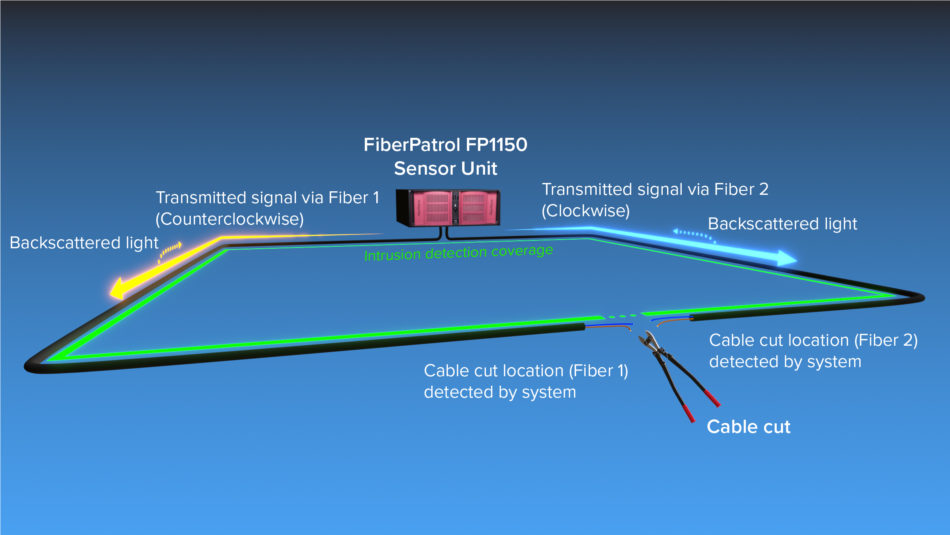The Process of Installing a Fiber Optics Infrastructure for Security Installations in Your Building
The Process of Installing a Fiber Optics Infrastructure for Security Installations in Your Building
Blog Article
The Ultimate Overview to Fiber Optic Security Equipments for Your Service
In an era where protection issues are vital for services, understanding the intricacies of fiber optic modern technology can be transformative. This overview details how incorporating fiber optic safety and security systems not only improves information defense yet additionally uses benefits like resistance to disturbance and real-time surveillance capacities.
Understanding Fiber Optic Innovation

The core of a fiber optic cable is composed of a thin glass or plastic facility, surrounded by a cladding layer that mirrors light back into the core. Single-mode fibers are made for long-distance transmission, while multi-mode fibers are suitable for much shorter ranges, frequently used within structures.
Optical fiber are not only quicker yet additionally extra safe than traditional circuitry. Their fundamental resistance to electro-magnetic interference and the problem of using the signal without detection make them a favored option for businesses prioritizing data integrity and security. As companies progressively rely upon safe and secure and reliable interaction systems, comprehending fiber optic innovation ends up being vital for informed decision-making.
Trick Advantages of Fiber Optic Safety And Security
When considering safety alternatives for a service, the benefits of fiber optic systems are especially compelling. Fiber optic technology offers outstanding data transmission speeds and data transfer capability, making it excellent for managing high-resolution video feeds from security electronic cameras. This capability makes certain that security personnel receive real-time information, improving total reaction times to possible safety threats.
Moreover, fiber optic cables are inherently immune to electromagnetic interference, which can jeopardize the stability of traditional copper-based systems. This resistance guarantees that the data transferred continues to be protected and continuous, supplying a more reputable security framework. In addition, fiber optics are less prone to physical damages, as they are made from glass instead of metal, minimizing upkeep expenses and downtime.
Fiber optic systems supply boosted cybersecurity functions, consisting of encryption capabilities that safeguard delicate information from unapproved gain access to. Jointly, these advantages make fiber optic safety systems a durable choice for organizations looking for to enhance their protection steps.
Installation Refine and Factors To Consider
Taking into consideration the complexities involved, the installment process of fiber optic protection systems calls for careful preparation and implementation. The initial step includes a comprehensive website evaluation to recognize optimal locations for cabling and tools. This assessment needs to think about ecological elements, existing infrastructure, and possible vulnerabilities.

Additionally, the setup needs to follow regional building codes and sector standards. This might consist of collaborating with different stakeholders such as building supervisors, IT groups, and security personnel to make certain seamless integration with existing systems.
Post-installation, rigorous testing is needed to validate system performance and identify any kind of concerns that might arise. By prioritizing these considerations throughout the installation process, companies can make sure a durable and reliable fiber optic security system that fulfills their details safety and security requirements.
Most Current Innovations in Fiber Optic Security
Recent developments in fiber optic modern technology have substantially enhanced the abilities of protection systems for businesses. Among the most remarkable advancements is the integration of fiber optic sensing units that can identify vibrations and breaches along the border of a center. These sensors offer real-time surveillance, making it possible for rapid response to prospective breaches.
Furthermore, the development of distributed fiber optic noticing innovation permits the continual tracking of large areas with a solitary fiber cable television. This method not only decreases installment costs yet additionally boosts the integrity of monitoring systems by eliminating the requirement for multiple, different sensors.
Furthermore, advancements in multiplexing methods have actually made it possible for services to send vast quantities of information over fiber optic networks, improving the capabilities of video security systems. High-definition video clip feeds can now be sent over cross countries without loss of quality, guaranteeing that protection personnel have access to clear and workable information.
Last but not least, making use of artificial intelligence (AI) together with fiber optic systems is changing hazard detection. AI formulas can evaluate information from fiber optic networks to recognize uncommon patterns or behaviors, permitting for aggressive safety and security actions. These developments jointly stand for a significant jump ahead in fiber optic safety modern technology.
Picking the Right System for Your Company
Choosing the ideal fiber optic safety system for your company is critical for ensuring optimal security and peace of mind. To make an informed selection, assess your details security requirements, thinking about elements such as the size of your facilities, the nature of your operations, and possible susceptabilities.
Begin by evaluating the level of protection called for; for example, high-risk environments might necessitate advanced systems with incorporated monitoring and invasion discovery abilities. Next, consider scalability; as your business expands, your protection system ought to be qualified of increasing to suit enhanced demands without considerable overhauls.
In addition, explore the integrity and performance of various systems. Search for suppliers with established reputations and client testimonials that attest to their service top quality. It's also a good idea to make inquiries regarding the technology's compatibility with existing framework, guaranteeing a smooth assimilation process.
Final Thought
To conclude, fiber optic safety and security systems present a durable option for enhancing service safety and security frameworks. The integration of high-speed data transmission, resistance to electro-magnetic disturbance, and progressed surveillance capabilities dramatically improves total defense (fiber optic security system). By recognizing the innovation, acknowledging its advantages, and considering the installment procedure, companies can make enlightened decisions. The current developments additionally strengthen the performance of these systems, making sure that organizations stay safe and secure and versatile in an ever-evolving risk landscape.
Report this page